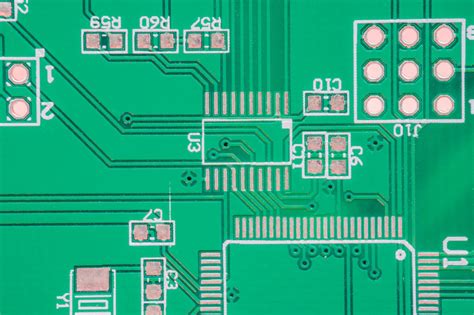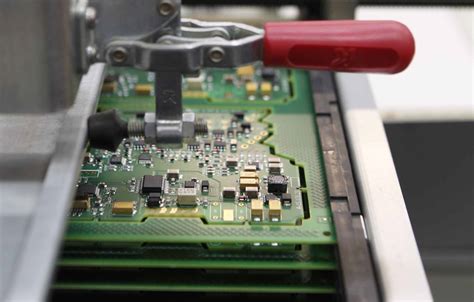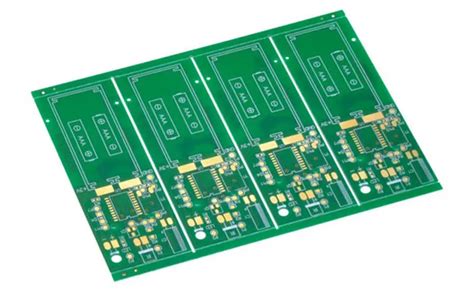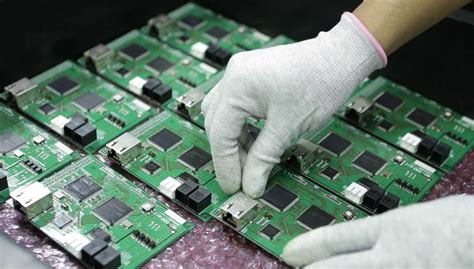Flex pcb kapton
Advantages Of Using Kapton In Flex PCB Design
In the realm of modern electronics, the demand for compact, efficient, and reliable components has led to significant advancements in printed circuit board (PCB) technology. Among these innovations, flexible PCBs have emerged as a pivotal solution, offering versatility and adaptability in various applications.
A critical material that has contributed to the success of flexible PCBs is Kapton, a polyimide film known for its exceptional properties. Understanding the advantages of using Kapton in flex PCB design is essential for engineers and designers seeking to optimize their electronic products.
One of the foremost advantages of Kapton in flex PCB design is its remarkable thermal stability.
Kapton can withstand extreme temperatures, ranging from as low as -269°C to as high as 400°C. This wide temperature range makes it an ideal choice for applications that experience significant thermal fluctuations, such as aerospace, automotive, and industrial electronics. The ability to maintain structural integrity and performance under such conditions ensures that devices remain reliable and functional, even in the most demanding environments.
In addition to its thermal resilience, Kapton exhibits excellent electrical insulation properties.
This characteristic is crucial in preventing short circuits and ensuring the safe operation of electronic devices. The high dielectric strength of Kapton allows for the design of compact circuits without compromising on safety or performance. As electronic devices continue to shrink in size, the need for materials that can provide effective insulation in limited spaces becomes increasingly important, and Kapton meets this requirement with ease.
Moreover, Kapton’s mechanical flexibility is a significant advantage in flex PCB design.
Unlike rigid PCBs, flexible PCBs can be bent, twisted, and folded to fit into unconventional spaces, making them ideal for applications where space is at a premium. The flexibility of Kapton allows for innovative design possibilities, enabling the creation of complex, multi-layered circuits that can conform to the contours of various devices. This adaptability is particularly beneficial in the development of wearable technology, medical devices, and consumer electronics, where ergonomic design and user comfort are paramount.
Furthermore, Kapton’s chemical resistance enhances its suitability for use in harsh environments.
It is resistant to a wide range of chemicals, including solvents, oils, and acids, which ensures that the flex PCBs remain unaffected by exposure to potentially damaging substances. This resistance extends the lifespan of electronic devices and reduces the need for frequent maintenance or replacement, thereby offering cost savings over time.
In addition to these technical advantages, Kapton is also lightweight, which contributes to the overall reduction in the weight of electronic devices.
This is particularly advantageous in applications such as aerospace and portable electronics, where weight reduction is a critical factor. The use of Kapton in flex PCB design not only enhances the performance and reliability of electronic devices but also supports the development of more sustainable and energy-efficient products.
In conclusion, the integration of Kapton in flex PCB design offers a multitude of benefits that address the evolving needs of modern electronics. Its thermal stability, electrical insulation, mechanical flexibility, chemical resistance, and lightweight nature make it an indispensable material in the development of advanced electronic solutions. As technology continues to advance, the role of Kapton in enabling innovative and efficient designs will undoubtedly remain significant, driving further progress in the field of flexible electronics.
Manufacturing Process Of Flex PCBs With Kapton
The manufacturing process of flexible printed circuit boards (PCBs) with Kapton involves a series of intricate steps that require precision and expertise. Kapton, a polyimide film developed by DuPont, is renowned for its exceptional thermal stability, chemical resistance, and flexibility, making it an ideal substrate for flexible PCBs. The process begins with the selection of high-quality Kapton film, which serves as the base material. This film is chosen for its ability to withstand extreme temperatures and its excellent dielectric properties, which are crucial for the performance and reliability of the final product.
Once the Kapton film is selected, the next step involves the application of a conductive material, typically copper, onto the film.
This is achieved through a process known as lamination, where a thin layer of copper foil is bonded to the Kapton substrate. The lamination process is critical, as it ensures that the copper adheres uniformly to the Kapton, providing a stable foundation for the subsequent etching process. Following lamination, the copper-clad Kapton film undergoes a photolithographic process. In this step, a photoresist material is applied to the copper surface, and a photomask is used to define the desired circuit pattern. The film is then exposed to ultraviolet light, which hardens the photoresist in the areas not covered by the mask. The unexposed areas are subsequently removed, revealing the underlying copper.
The next phase involves the etching process, where the exposed copper is chemically removed, leaving behind the desired circuit pattern.
This step requires meticulous control to ensure that the etching solution does not damage the Kapton substrate or the remaining copper traces. After etching, the remaining photoresist is stripped away, revealing the completed circuit pattern on the Kapton film. At this stage, the flexible PCB begins to take shape, but additional processes are necessary to enhance its functionality and durability.
To protect the circuit and improve its performance, a solder mask is applied over the copper traces.
This protective layer prevents oxidation and provides insulation, ensuring that the circuit remains intact during operation. Additionally, surface finishes such as immersion gold or tin may be applied to the exposed copper pads to enhance solderability and prevent corrosion. These finishes are crucial for maintaining the integrity of the connections in various environmental conditions.
The final steps in the manufacturing process involve testing and quality assurance.
Each flexible PCB is subjected to rigorous electrical testing to verify its functionality and ensure that it meets the required specifications. This testing phase is essential to identify any defects or inconsistencies that may have arisen during the manufacturing process. Once the PCBs pass these tests, they are ready for integration into electronic devices.
In conclusion, the manufacturing process of flex PCBs with Kapton is a complex and precise operation that demands careful attention to detail at every stage. From the selection of high-quality Kapton film to the application of conductive materials and protective coatings, each step is crucial in producing a reliable and high-performance flexible circuit. The use of Kapton as a substrate not only enhances the flexibility and durability of the PCBs but also ensures their suitability for a wide range of applications, from consumer electronics to aerospace and medical devices.

Applications Of Kapton-Based Flex PCBs In Modern Electronics
Kapton-based flexible printed circuit boards (PCBs) have become a cornerstone in the advancement of modern electronics, offering a unique combination of flexibility, durability, and thermal stability. These attributes make them indispensable in a variety of applications, ranging from consumer electronics to aerospace technology. As the demand for more compact and efficient electronic devices continues to grow, the role of Kapton-based flex PCBs becomes increasingly significant.
One of the primary applications of Kapton-based flex PCBs is in the realm of consumer electronics, where the need for lightweight and compact components is paramount.
Smartphones, tablets, and wearable devices benefit greatly from the flexibility and thinness of these PCBs. The ability to bend and conform to various shapes allows designers to create more ergonomic and aesthetically pleasing products without compromising on functionality. Moreover, the thermal stability of Kapton ensures that these devices can operate efficiently even under high-temperature conditions, which is crucial for maintaining performance and longevity.
In addition to consumer electronics, the automotive industry has also embraced the use of Kapton-based flex PCBs.
Modern vehicles are equipped with a multitude of electronic systems, including advanced driver-assistance systems (ADAS), infotainment systems, and engine control units. The flexibility of these PCBs allows for more efficient use of space within the vehicle’s architecture, enabling the integration of complex electronic systems in a compact form. Furthermore, the durability and reliability of Kapton material ensure that these systems can withstand the harsh environmental conditions often encountered in automotive applications, such as extreme temperatures and vibrations.
The medical field is another area where Kapton-based flex PCBs have made a significant impact.
Medical devices, such as pacemakers, hearing aids, and diagnostic equipment, require highly reliable and miniaturized electronic components. The biocompatibility and flexibility of Kapton make it an ideal choice for these applications, allowing for the development of devices that can be comfortably worn or implanted in the human body. Additionally, the ability to produce intricate circuit patterns on a flexible substrate enables the creation of sophisticated medical devices that can perform complex functions with high precision.
Aerospace and defense industries also benefit from the unique properties of Kapton-based flex PCBs.
In these sectors, the need for lightweight and reliable components is critical, as they directly impact the performance and safety of aircraft and defense systems. The high thermal resistance and mechanical strength of Kapton make it suitable for use in extreme environments, such as outer space or high-altitude flights. This ensures that electronic systems remain operational under conditions that would typically challenge conventional materials.
Furthermore, the telecommunications industry has seen a surge in the use of Kapton-based flex PCBs, particularly with the advent of 5G technology.
The demand for faster data transmission and more efficient network infrastructure has led to the development of advanced communication devices that rely on the flexibility and reliability of these PCBs. The ability to integrate multiple functions into a single, compact unit is essential for meeting the growing needs of modern communication systems.
In conclusion, the applications of Kapton-based flex PCBs in modern electronics are vast and varied, spanning multiple industries and driving innovation across the board. Their unique combination of flexibility, durability, and thermal stability makes them an invaluable component in the development of cutting-edge electronic devices. As technology continues to evolve, the role of these versatile PCBs is likely to expand even further, paving the way for new advancements and applications in the ever-changing landscape of modern electronics.

Comparing Kapton To Other Substrates In Flex PCB Fabrication
In the realm of flexible printed circuit board (PCB) fabrication, the choice of substrate material is a critical decision that significantly impacts the performance, durability, and application of the final product. Among the various substrates available, Kapton, a polyimide film developed by DuPont, stands out due to its unique properties. However, to fully appreciate its advantages, it is essential to compare Kapton with other commonly used substrates in flex PCB fabrication.
Kapton is renowned for its exceptional thermal stability, which allows it to maintain its mechanical and electrical properties across a wide temperature range, from as low as -269°C to as high as 400°C.
This characteristic makes it particularly suitable for applications that require exposure to extreme temperatures, such as aerospace and military technologies. In contrast, other substrates like polyester, while cost-effective, typically offer a lower thermal resistance, limiting their use in high-temperature environments. Consequently, when thermal stability is a priority, Kapton emerges as the superior choice.
Moreover, Kapton exhibits excellent chemical resistance, which is crucial in environments where the flex PCB may be exposed to harsh chemicals or solvents.
This resistance ensures that the substrate does not degrade or lose functionality over time, thereby enhancing the longevity and reliability of the circuit. On the other hand, substrates such as polyethylene naphthalate (PEN) may not offer the same level of chemical resistance, potentially leading to performance issues in chemically aggressive settings. Therefore, for applications demanding robust chemical resistance, Kapton is often preferred.
Another significant advantage of Kapton is its outstanding flexibility and mechanical strength.
These properties enable the design of complex, bendable circuits that can withstand repeated flexing without cracking or breaking. This is particularly beneficial in applications like wearable electronics and medical devices, where flexibility is paramount. While other substrates like liquid crystal polymer (LCP) also offer good flexibility, Kapton’s proven track record and versatility often make it the go-to material for many engineers and designers.
In addition to its mechanical and thermal properties, Kapton provides excellent electrical insulation, which is vital for maintaining signal integrity in high-frequency applications.
This characteristic is comparable to that of LCP, which also offers low dielectric constant and loss. However, Kapton’s long-standing presence in the industry and its well-documented performance metrics provide a level of assurance that newer materials may not yet offer.
Despite these advantages, it is important to acknowledge that Kapton is generally more expensive than other substrates like polyester or PEN.
This cost factor can be a significant consideration for projects with tight budget constraints. However, the initial investment in Kapton can often be justified by the long-term benefits it provides in terms of reliability, performance, and reduced maintenance costs.
In conclusion, while there are several substrates available for flex PCB fabrication, Kapton’s unique combination of thermal stability, chemical resistance, flexibility, and electrical insulation makes it a highly attractive option for a wide range of applications. By carefully evaluating the specific requirements of a project and considering the trade-offs between cost and performance, engineers can make informed decisions about whether Kapton or another substrate is the most suitable choice for their flex PCB needs.







